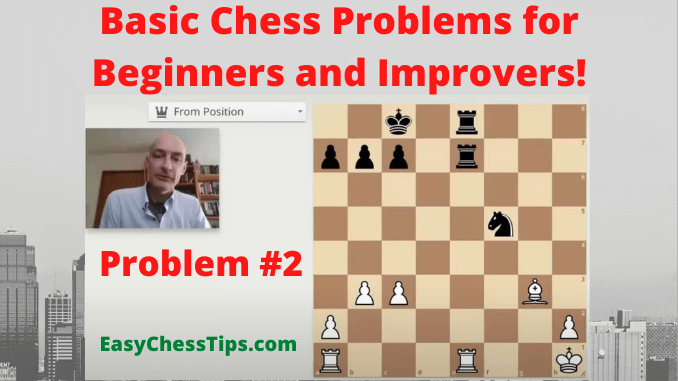
This is the second of a series of short chess problem training videos. Here is the problem:
Black to move…
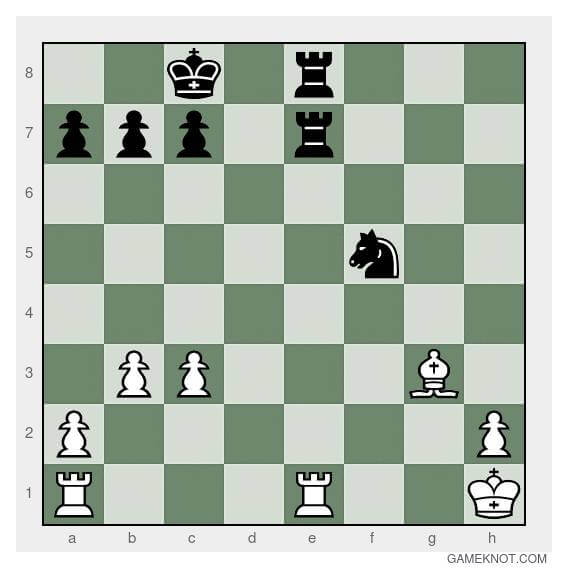
February 12, 2021

This is the second of a series of short chess problem training videos. Here is the problem:

February 9, 2021
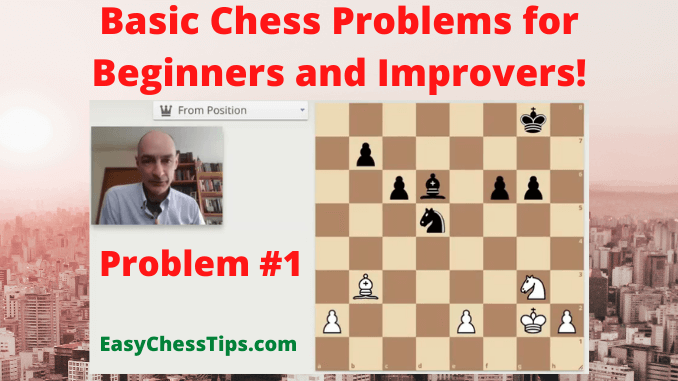
This is the first in a series of short videos that I’ve started making for a group of Japanese college students who are studying English, and who, with some prompting from me, have recently taken up chess. The students all started as complete beginners. Most of them also have no experience of playing Shogi, or Japanese chess. So chess is something completely new for them.
A couple of weeks ago we decided to start a line group to discuss chess. I post a problem to the group once every few days, and then a day or two later I post a video that goes through the problem in what I hope is an easy–to-understand way.
The videos are all less than five minutes long, and each one focuses on just one problem. That makes these videos ideal material for “Easy Chess Tips”!
Each video looks at just one chess problem and explains why the solution is the best (or only) option.
Here’s Problem 1, Taken from 100 Chess problems for the Rest of Us, by T. E. Klemm. It is White to move.
So the question is, what is White’s best move?
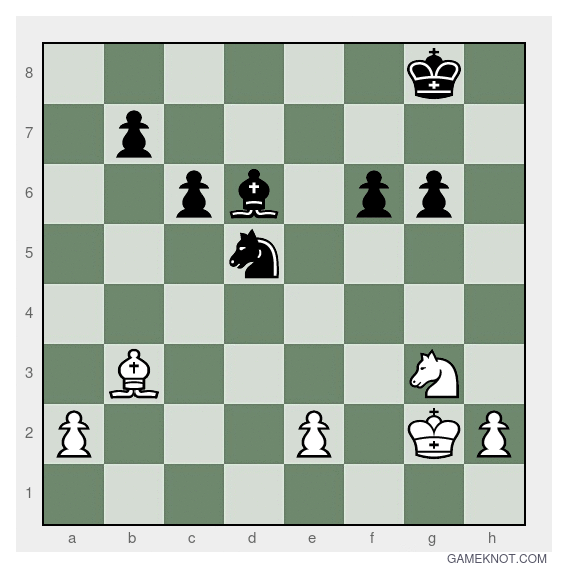
November 8, 2020

In chess, a discovered attack happens when you make a move that opens a path for another of your pieces to take an opponent’s piece. It works best when the piece you moved also attacks another of the opponent’s pieces or checks the King.
In a recent game, I was rather fortunate in being able to turn a less-than-ideal Bishop move into a discovered attack on my opponent’s Knight. My opponent did not notice the threat the lurking Bishop posed until it captured his hanging Knight. 🙂 This is a useful tactic to know and it can be especially effective in casual games, pub chess, or games played in a casual environment. It is not uncommon for casual players to miss unmasked threats on the diagonals!
Continue ReadingSeptember 13, 2020
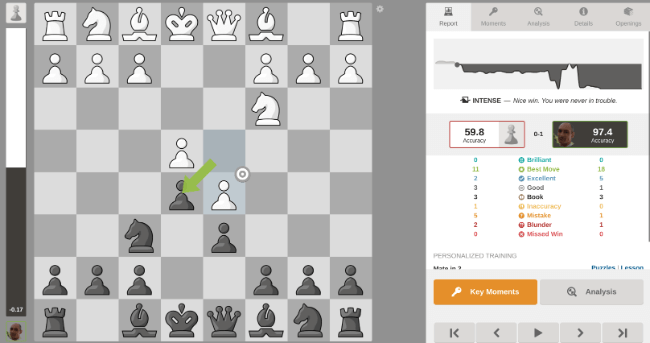
In the last game I played as Black against my regular opponent, he opened with 1. e4 and I replied with my repertoire move, 1… d6. A few moves later we found ourselves with a situation that seemed familiar!
We arrive at the Maróczy Defence by transposition. (The pure Maróczy Defence is 1. e4 d6, 2. d4 e5…)
Next, my opponent decided to advance his Queen’s pawn, which the Chess.com engine rates as “good,” which really means just “okay.” Clearly, the chess engine prefers to exchange pawns, which often leads to an early exchange of queens (4. dxe5 dxe5, 5. Qxd8+ Kxd8).
I responded with 4… Be7 and realized that if my opponent were to play 5. Bg5 the “Maróczy Defence Pawn Grab” (as I call it) would be in play…
Back in April I completely missed the opportunity (see my previous blog post and video) when the exact same situation occurred. This time around, my opponent had completely forgotten about that game and conveniently played 5. Bg5? again, just as he did in April!
Continue ReadingAugust 25, 2019
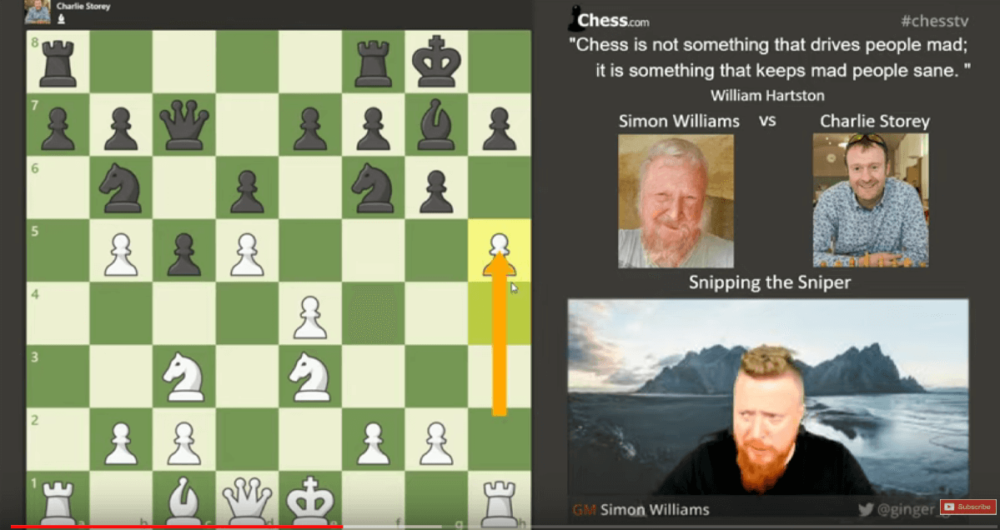
Here’s the Ginger GM, Simon William’s video account of his victory over Charlie Storey in the third round game of the British Chess Championships in Torquay in the summer of 2019.
I am posting this game because both Simon and Charlie are acquaintances of mind and occasional quaffing partners. I have learnt a lot from both of these professional players. Indeed, Charlie was the first person I met when I participated in my first ever chess tournament at the British Chess Championships in Torquay back in 2013.
Continue Reading